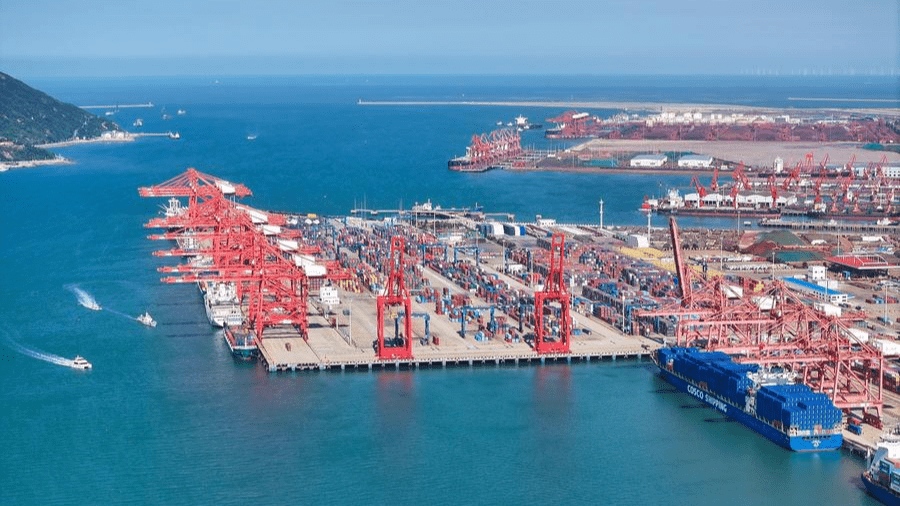
China’s entry into the World Trade Organization (WTO) in 2001 was a pivotal moment in the country’s economic takeoff. This event marked China’s formal integration into the global economic system, ushering in a new era of globalization. China’s membership in the WTO brought about rapid liberalization of international trade, lowering trade barriers. This move has proven highly beneficial to both the global and Chinese economies, underlining China’s growing influence in the international economic system and generating optimism about its future.
The success of Chinese companies can be attributed to two main factors. First, they learned quickly from Western companies and then competed successfully with them, absorbing valuable experience and outperforming their competitors through innovation, discovery and invention. Second, China’s presence in global markets since joining the WTO has facilitated the flow of knowledge, technology and capital into the country, and open markets have played a key role in enhancing competitiveness and fueling China’s long-standing export boom.
This global exposure and access to international markets underscores the importance of economic integration and has played a significant role in the emergence of many domestic companies as global leaders in their industries. For example, Huawei, Baidu and Tencent have excelled in electronics and telecommunications, while Alibaba, BYD and Contemporary Amperex Technology have made their mark in e-commerce, electric vehicles and batteries.
Losing their competitiveness, Western countries began using sanctions and trade restrictions to protect their domestic markets, thereby destroying the foundations of the established global economic order. In response, Chinese corporations have begun building production facilities in friendly jurisdictions such as Ireland, Hungary, Mexico, Singapore and Vietnam to circumvent discriminatory barriers.
This approach has led to numerous successful projects, with investments in these initiatives exceeding $18 billion in the last year alone. With this, officials in the US and Europe are not only aware, but are becoming increasingly cautious about potential gaps in the market as this trend gains momentum, highlighting the challenges they face.
A recent study by the International Monetary Fund has revealed a significant trend. While trade and investment between the US and China have declined, the study has highlighted the growing and pivotal role of “connector countries.” Acting as intermediaries or bridges between China and Western markets, these nations are reshaping the global economic landscape and demonstrating their growing importance.
Why do Chinese investors choose these “connector countries”? For example, Singapore and Vietnam enjoy significant advantages thanks to their bilateral free trade agreements with the US and their membership in the Regional Comprehensive Economic Partnership (RCEP). These agreements allow the export of goods and services from these countries to the US without tariffs, making them convenient partners to serve the American market. This strategic vision, a testament to Chinese entrepreneurial ingenuity, is transforming the global economic landscape.
Mexico’s participation in the United States-Mexico-Canada Agreement (USMCA) has also opened up new opportunities for Chinese investment. This agreement allows for free trade in goods between the countries, which has led to a significant increase in Chinese foreign direct investment (FDI) in Mexico. From $500 million between 2000 and 2004, investment has grown to $2.5 billion in 2022. Although this figure is down from its peak of nearly $6 billion in 2016, it is still more than double that of 2018 and continues to grow.
Similar considerations apply to Ireland and Hungary. Both countries are part of the EU, which has a single market for its 27 member states. If products are manufactured and sold within the EU, tariffs imposed by the bloc on products imported from China do not apply.
Ireland’s trade with China has tripled in the past five years, and both sides are keen to increase investment. Meanwhile, according to a study by the Berlin-based think tank Mercator Institute for China Studies, Hungary will receive 44% of all Chinese FDI in Europe by 2023, surpassing investment in Germany, France and the UK.
In fact, since China joined the WTO, Chinese companies are increasingly investing directly in the US without the involvement of “connector countries.” By the end of 2022, nearly 5,000 Chinese companies were operating in the US, spanning sectors such as technology, manufacturing, finance, and real estate. The growth rate of Chinese companies entering the US market has been steady at 8 percent annually over the past five years.
More recently, it has emerged that Chinese solar companies are poised to supply about half of the U.S. market. Within the next year, Chinese companies are expected to be able to produce at least 20 gigawatts of solar panels per year. Local and state officials in places where Chinese companies are setting up factories, such as Arizona, North Carolina, Ohio and Texas, have welcomed the investments.
In addition to direct investment in Western jurisdictions, Chinese companies continue to successfully raise funds in international capital markets. As of January 8, 2024, there were 265 Chinese companies listed on major US exchanges, including the New York Stock Exchange (NYSE), NASDAQ, and NYSE American, with a combined market capitalization of $848 billion.
With strong competition from high-end Chinese imports that offer more value for money and growing concerns about national security, Western countries have become wary of globalization and have eventually taken steps to slow it down. However, numerous examples demonstrate that global trade will persist, and while the pace of globalization may slow, it cannot be reversed. Innovation and competitiveness will remain crucial in shaping the international order.
Note: This article is republished from CGTN through a cooperation agreement between both parties for the dissemination of journalistic content. Original link.

Source: https://reporteasia.com/opinion/2024/09/16/china-impactos-incorporacion-omc/

